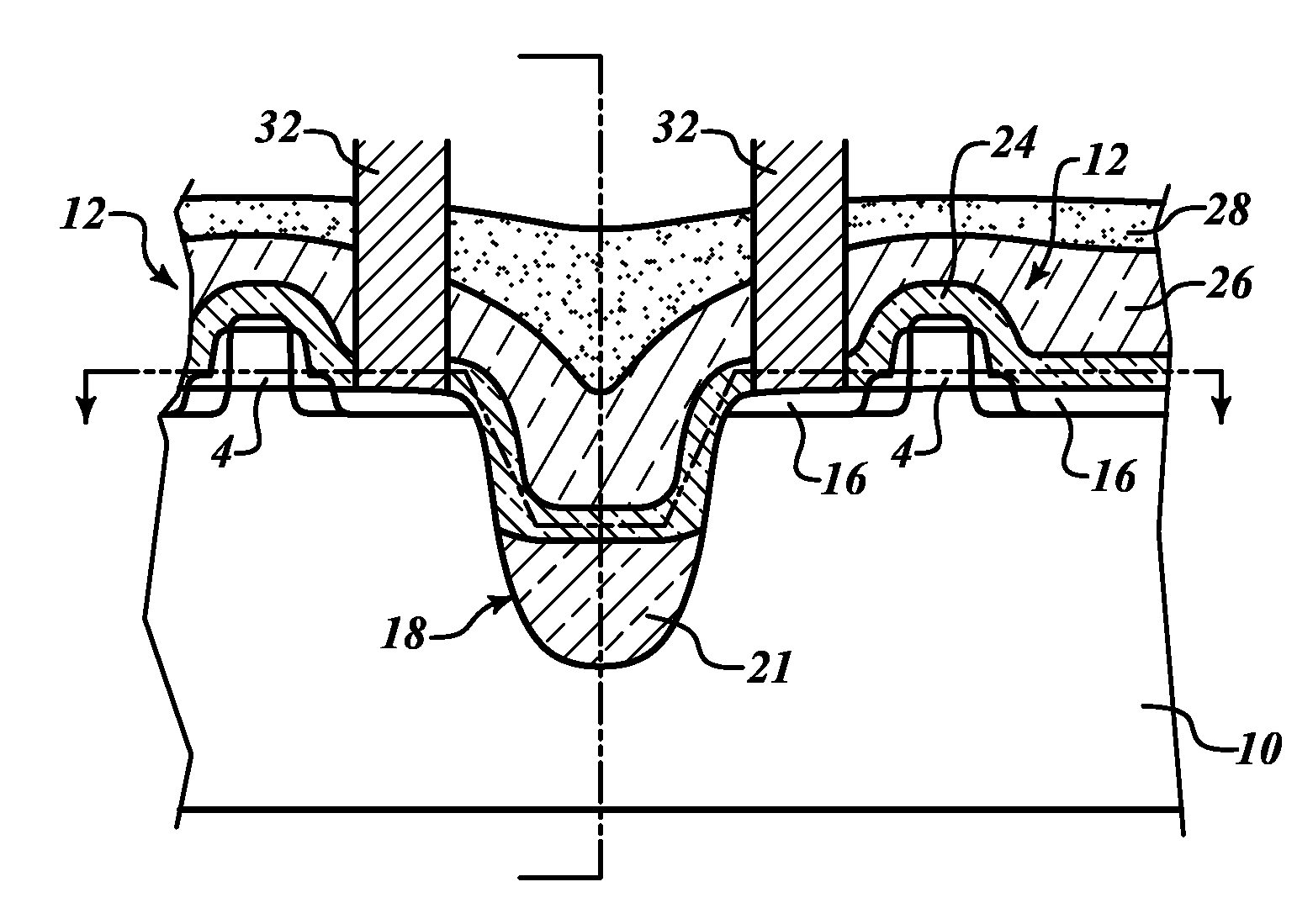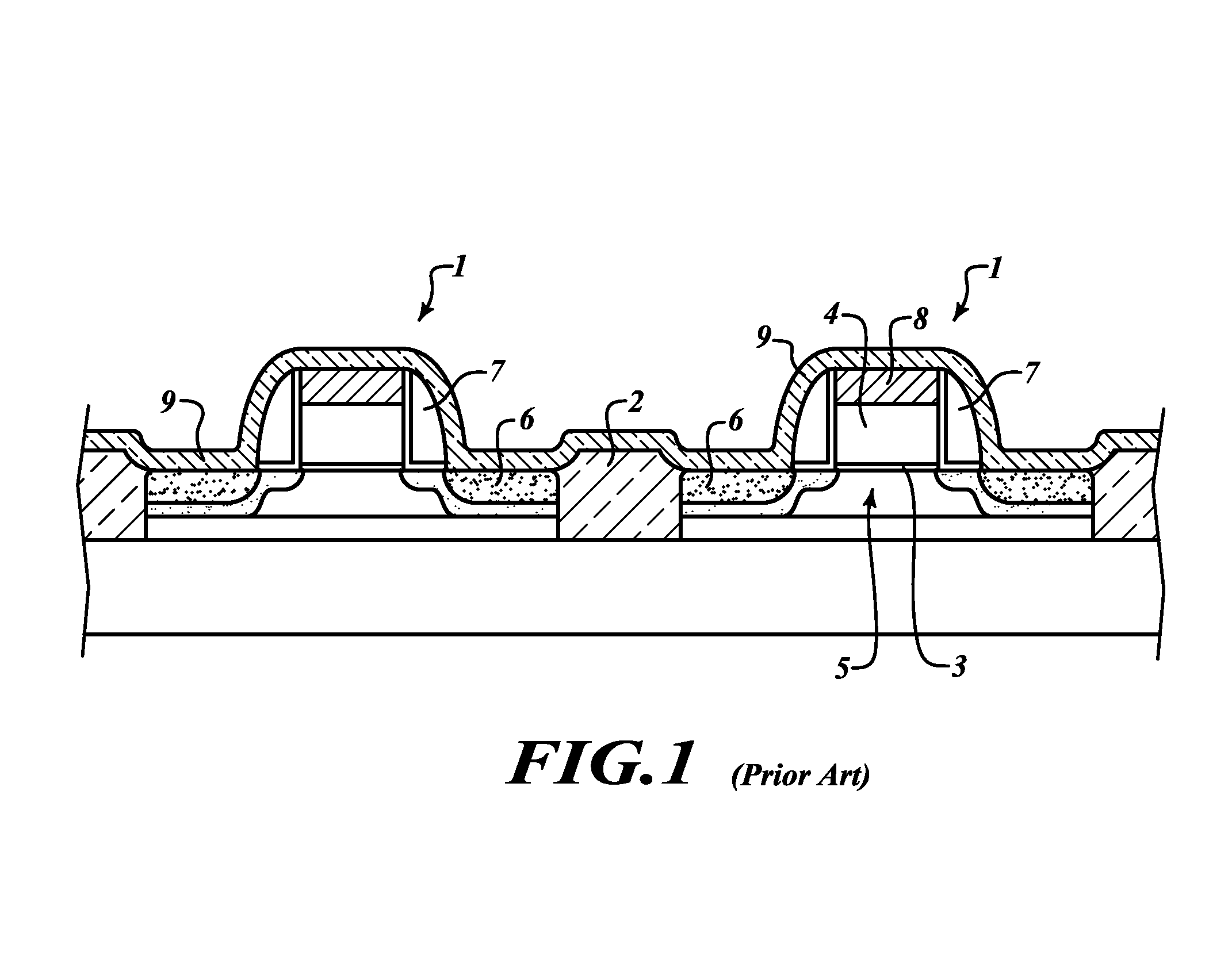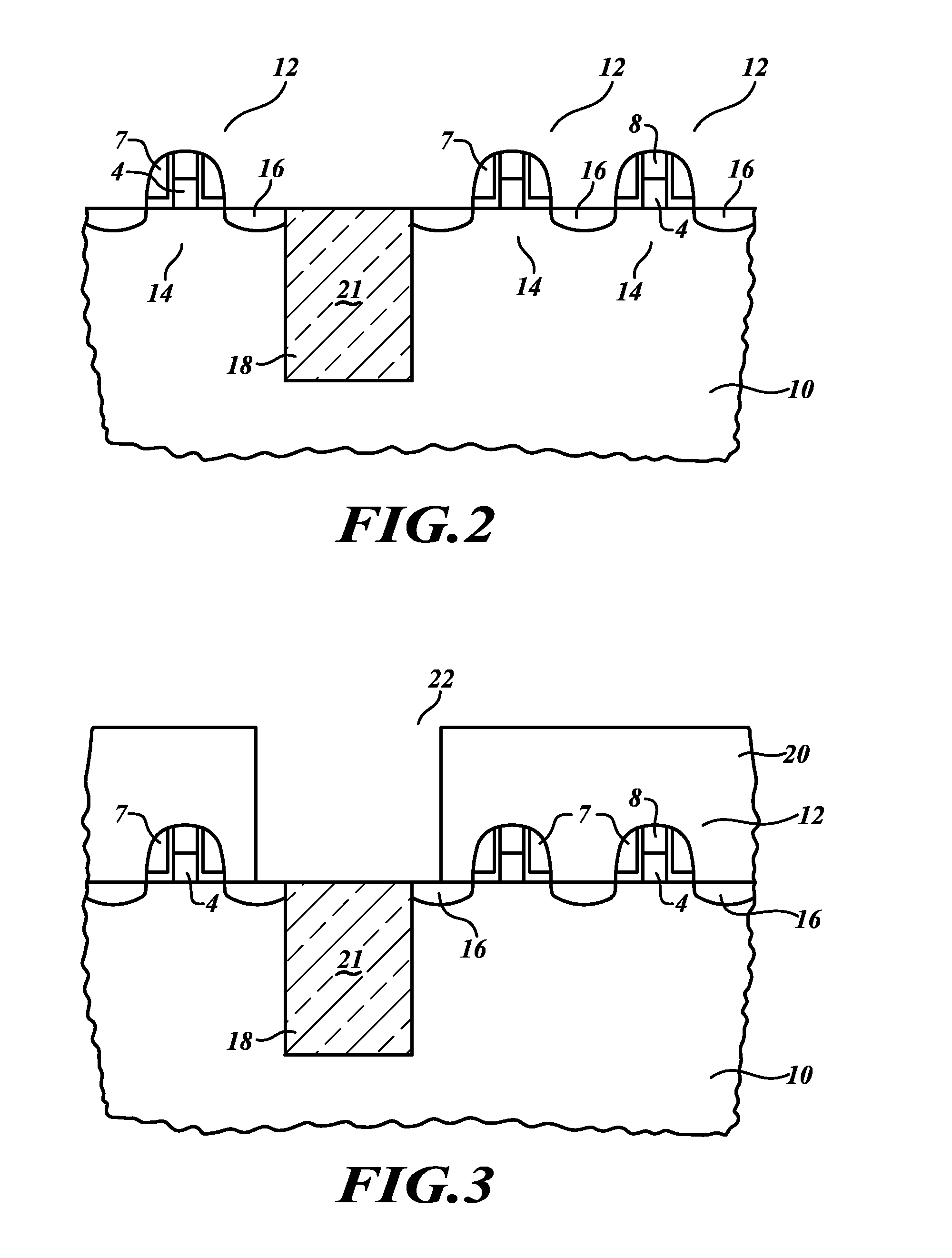Strained transistor and method for forming the same
a transistor and straining technology, applied in the direction of transistors, semiconductor devices, electrical equipment, etc., can solve the problems of difficult to precisely apply the strain to the channel region, difficult process steps, and many additional masks, and achieve the effect of preventing parasitic effects
- Summary
- Abstract
- Description
- Claims
- Application Information
AI Technical Summary
Benefits of technology
Problems solved by technology
Method used
Image
Examples
Embodiment Construction
[0026]FIG. 2 illustrates a semiconductor substrate 10, preferably made of monocrystalline silicon. The substrate has a plurality of transistors 12 formed therein. The transistors include channel regions 14 and source drain / regions 16. The term source / drain region includes both the source and the drain of a MOS transistor. As is known, a heavily doped conductive region adjacent a gate electrode can be either a source or a drain, depending on the relative electrical potentials at the gate electrode. Thus, the general term source / drain region as used herein includes all such regions, whether acting as sources or drains. The transistors 12 may have LDD implants, halo regions, and other structures, as are well-known in the art.
[0027]A trench isolation region 18 electrically isolates at least two of the transistors from each other. In one embodiment, the trench isolation region 18 is filled with a dielectric material 21, which has been previously deposited according to known techniques fo...
PUM
 Login to View More
Login to View More Abstract
Description
Claims
Application Information
 Login to View More
Login to View More - R&D
- Intellectual Property
- Life Sciences
- Materials
- Tech Scout
- Unparalleled Data Quality
- Higher Quality Content
- 60% Fewer Hallucinations
Browse by: Latest US Patents, China's latest patents, Technical Efficacy Thesaurus, Application Domain, Technology Topic, Popular Technical Reports.
© 2025 PatSnap. All rights reserved.Legal|Privacy policy|Modern Slavery Act Transparency Statement|Sitemap|About US| Contact US: help@patsnap.com



